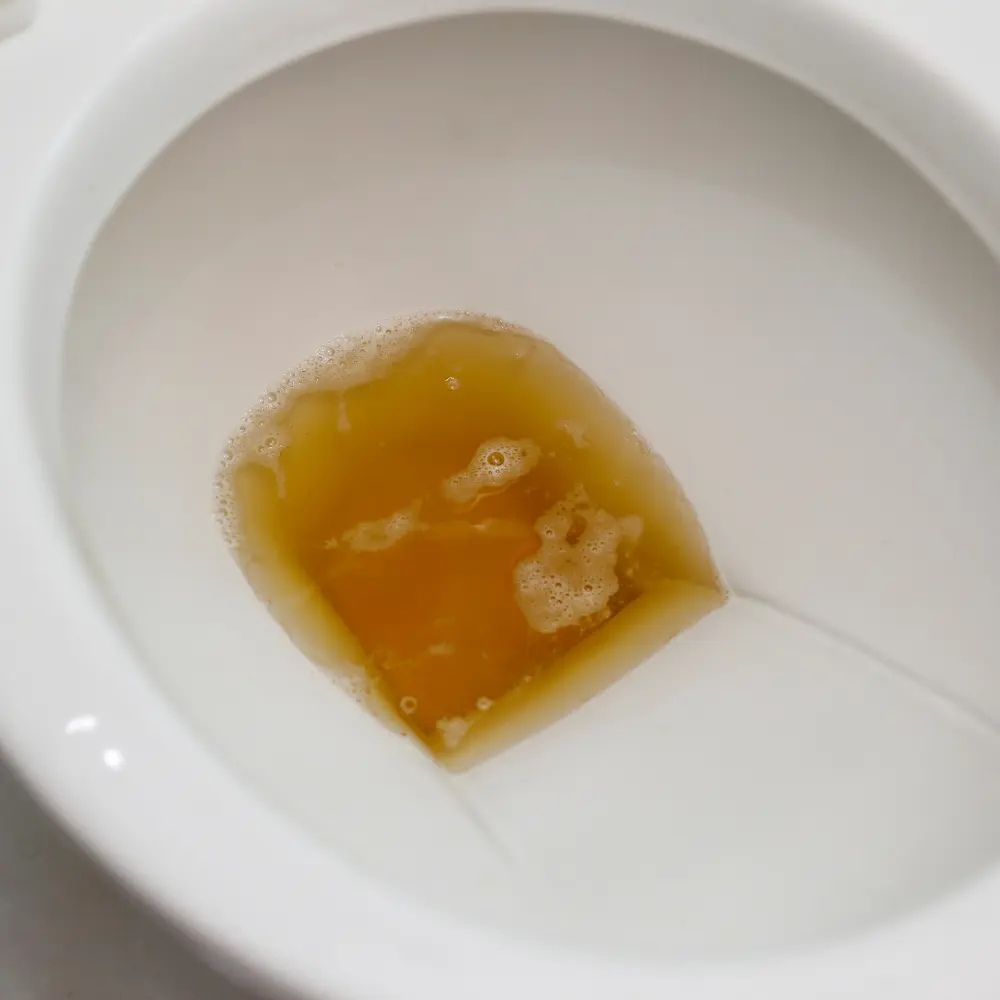Nothing quite compares to the ritualistic pleasure of enjoying a well-crafted espresso. The distinct, robust flavors, the mesmerizing aroma, and the velvety texture are all parts of the beautiful tapestry that weaves together a truly outstanding espresso experience. But what happens when your once perfectly balanced cup turns into a sour espresso? Why is my espresso sour, you might ask? This can turn your beloved routine into a rather disappointing experience.
When the notes of acidity overpower the natural harmony of flavors, you are left with a sour taste. Understanding why this sourness occurs is the first step towards reclaiming your espresso experience. In this comprehensive guide, we will delve into the intricate world of espresso brewing, examine the common causes of sour espresso, and provide expert tips and techniques to help you achieve that perfectly balanced cup you desire.
With insights from seasoned baristas, coffee connoisseurs, and industry experts, we will demystify the science and art behind espresso making. From the selection of the right coffee beans to the understanding of grind sizes, brewing temperatures, water quality, and extraction times, this guide is designed to offer practical solutions and elevate your coffee brewing skills.
So, join us on this caffeinated journey, where we will equip you with the knowledge to turn every cup of espresso into a symphony of perfectly-balanced flavors. Let’s transform that sour espresso experience into a delightful one.
How to Fix Sour Espresso? – Key Takeaway
- The Sour Truth: Sour espresso is typically a result of under-extraction, caused by factors like an incorrect grind size, short brewing time, and improper water temperature.
- Grind, Extract, Repeat: Perfecting espresso quality involves a focus on grind size, extraction time, and brew ratio. Systematically adjusting these parameters and evaluating taste after each change can lead to a more balanced brew.
- Purity is Key: The quality of your water plays a significant role in the taste of your espresso. Ensuring your water is free from impurities and has a balanced mineral content can dramatically enhance your brewing experience.
- Taste, Adjust, Improve: Regular evaluation and adjustment of brewing parameters are vital for quality control. Developing your palate and understanding how to diagnose under-extraction are crucial steps toward perfecting your brew.
- Clean Gear, Better Coffee: Maintaining the cleanliness of your coffee equipment, including your espresso machine and grinder, can prevent the accumulation of old coffee residue and oils, leading to a more delicious and enjoyable espresso experience.
Understanding the Causes of Sour Espresso
One of the first steps to improving your espresso is understanding why it can sometimes taste sour. Several factors contribute to this undesirable taste profile, from the extraction process to the freshness of your coffee and the brewing variables. Let’s break down these factors and see how they can result in a sour espresso.
The Role of Under Extraction in Sourness
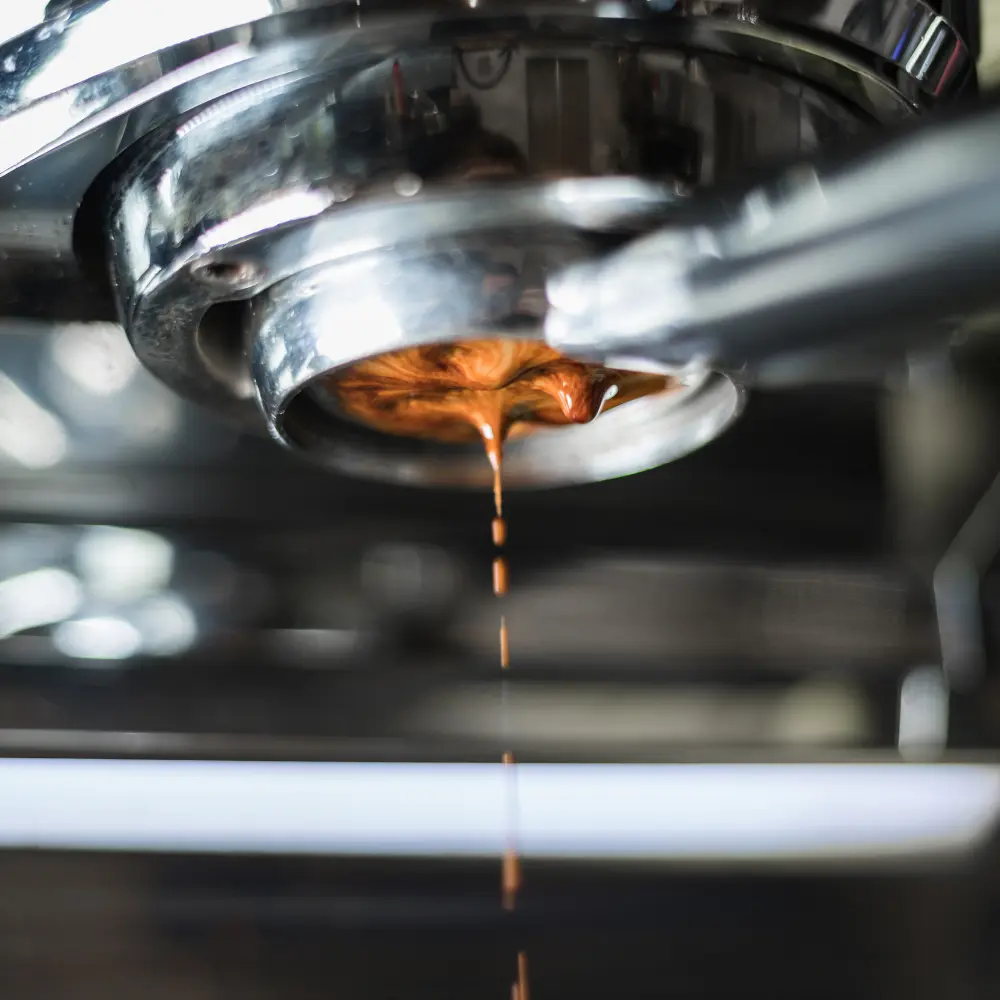
The taste of your espresso is significantly influenced by the extraction process, specifically whether your coffee is under-extracted, over-extracted, or perfectly extracted. When you brew a cup of espresso, the water dissolves and extracts the soluble compounds from the coffee grounds. The balance of these soluble compounds is what gives espresso its complex flavor profile. (1)
However, when your espresso is under-extracted, the water hasn’t had enough contact time with the coffee grounds, meaning it has failed to dissolve and extract enough of the desired flavor compounds. This typically results in an imbalance where acidic compounds, which are some of the first to be extracted, dominate the flavor profile. This is why under-extraction often manifests itself as sourness in your cup.
To address under-extraction:
- Increase your brew time to allow more contact between the water and coffee.
- Try a finer grind size to increase the surface area of the coffee in contact with the water.
The Impact of Coffee Freshness on Flavor
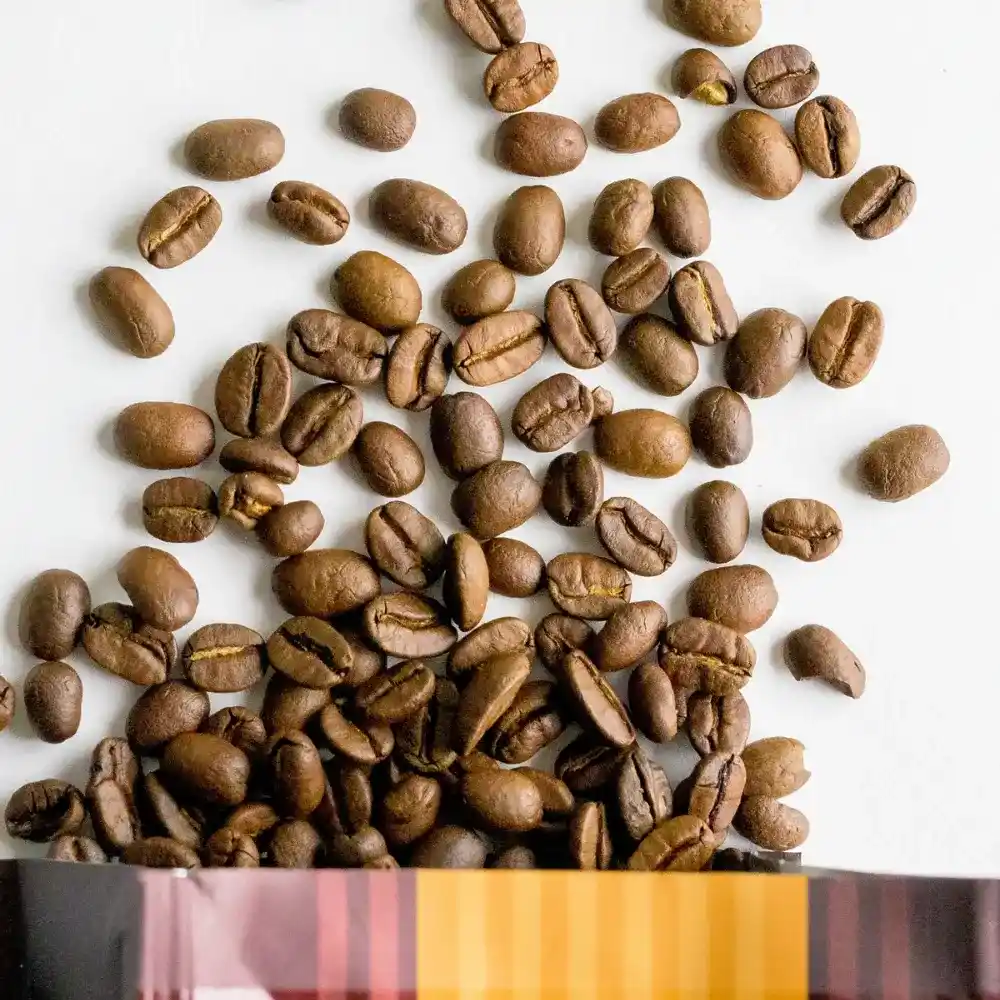
The freshness of the coffee beans is another major factor that can affect the taste of your espresso. Freshly roasted coffee beans contain carbon dioxide, which naturally degasses over time. If you brew your espresso immediately after roasting, the high levels of carbon dioxide will interact with the water, hindering proper extraction and leading to a sour taste. As such, allowing your beans to rest and degas for a few days after roasting can significantly improve the taste.
To ensure the freshness of your coffee:
- Purchase freshly roasted beans from trusted roasters.
- Store your coffee properly, ideally in an airtight container away from heat, light, and moisture.
- Buy coffee in small amounts that you can consume within a few weeks to ensure you’re always brewing with fresh beans.
Other Factors Affecting Sourness: Water Temperature, Grinder Settings, and Tamping
Several other variables play a role in the taste of your espresso. These include the temperature of your brewing water, the settings of your coffee grinder, and the technique you use for tamping your coffee grounds.
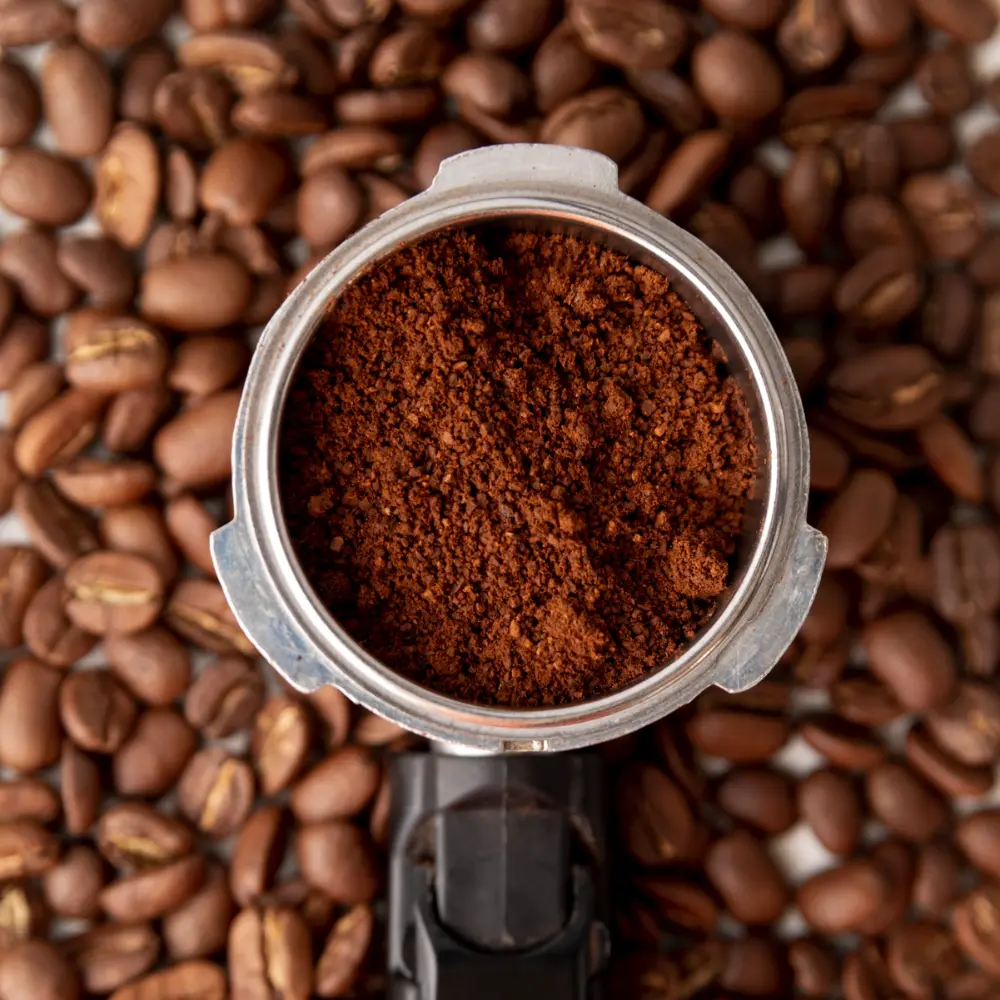
The brewing water temperature can significantly influence the extraction process. Lower water temperatures can lead to under-extraction, producing a sour taste. The optimal brewing temperature for espresso is typically between 195 and 205 degrees Fahrenheit.
The grinder settings also matter. A grinder that produces inconsistent particle sizes or is set too coarsely can cause under-extraction and sourness. A consistent, fine grind is key to achieving balanced extraction.
Finally, the tamping technique you employ can also influence extraction. If you tamp your coffee grounds too lightly, the water can channel through the coffee bed too quickly, leading to under-extraction. A firm and even tamp is essential for optimal extraction.
To tweak these variables:
- Adjust your brewing water temperature within the optimal range.
- Fine-tune your grinder settings to achieve a consistent, fine grind.
- Practice your tamping technique to ensure a firm, even tamp.
With these insights, you can start making adjustments in your espresso brewing process to address and fix the sourness in your cup. It’s all about striking the right balance to create a perfect espresso that delights your palate every time.
Adjusting Grind Size and Extraction Time
An espresso that’s perfect in taste doesn’t come about by accident; it’s the result of careful calibration of multiple factors like grind size, extraction time, and brew ratio. Learning to adjust these variables is like learning a new language – the language of coffee. Once mastered, you can make your espresso speak volumes through its robust and perfectly balanced taste. Let’s explore how to fine-tune these crucial components.
Finding the Right Grind Size: Finer or Coarser?
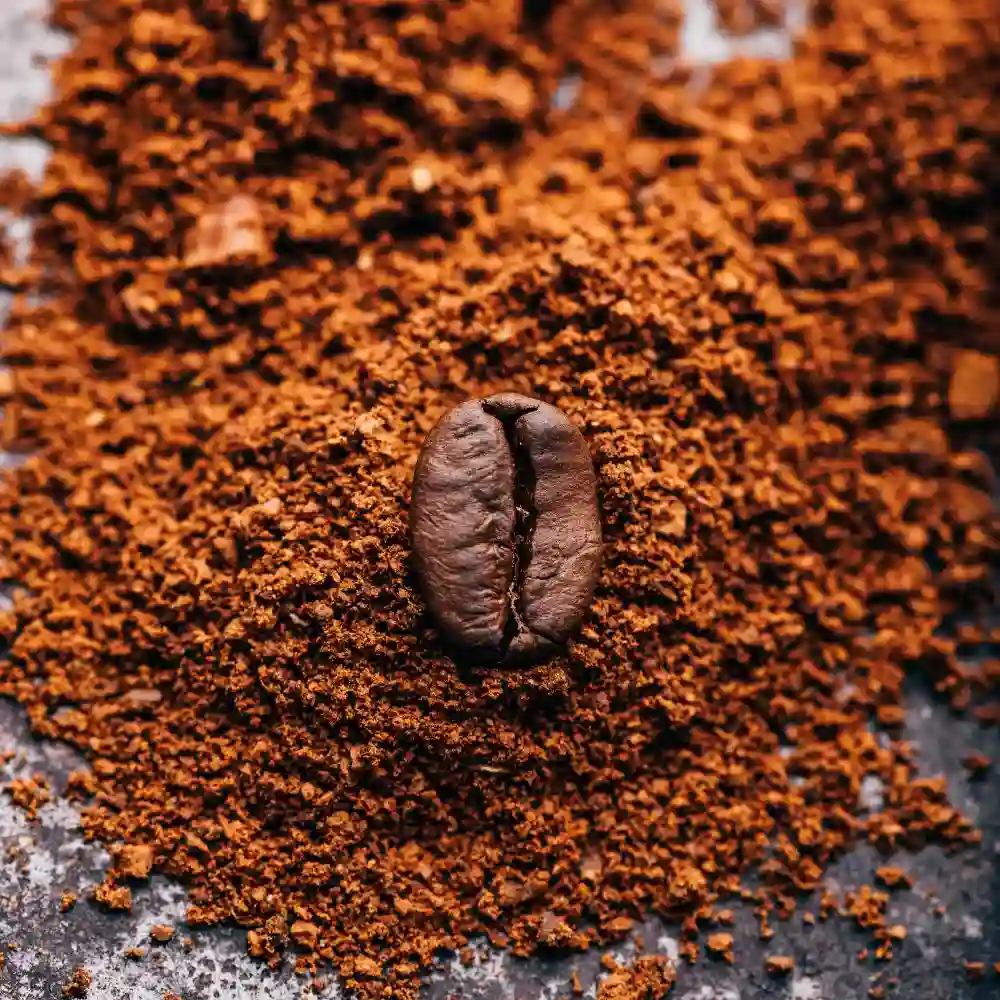
The coffee grind size plays a significant role in how your espresso turns out. Why is that so? Because the grind size directly affects how quickly or slowly the water can pass through the coffee grounds during extraction. A finer grind creates a larger surface area exposed to water, which leads to a faster extraction rate, whereas a coarser grind slows the extraction down.
So, if your espresso tastes sour, it’s often an indication that the water is passing through the coffee too quickly, resulting in under-extraction. To solve this, you need to adjust the grind to be a little finer. But be cautious – making the grind too fine can result in over-extraction, which would yield a bitter taste. It’s about finding the sweet spot that yields a rich, well-rounded espresso flavor.
To adjust your coffee grind size:
- Start with a medium-fine grind and brew a shot.
- Taste the espresso. If it’s sour, adjust the grind to be finer. If it’s bitter, make the grind slightly coarser.
- Keep making incremental adjustments until you hit the flavor profile you’re aiming for.
The Art of Fine-tuning Extraction Time
Alongside grind size, the extraction time – the duration for which the water is in contact with the coffee grounds – is another critical factor in brewing a delightful espresso. The right extraction time will depend on a range of variables, including the coffee type, grind size, and even water temperature.
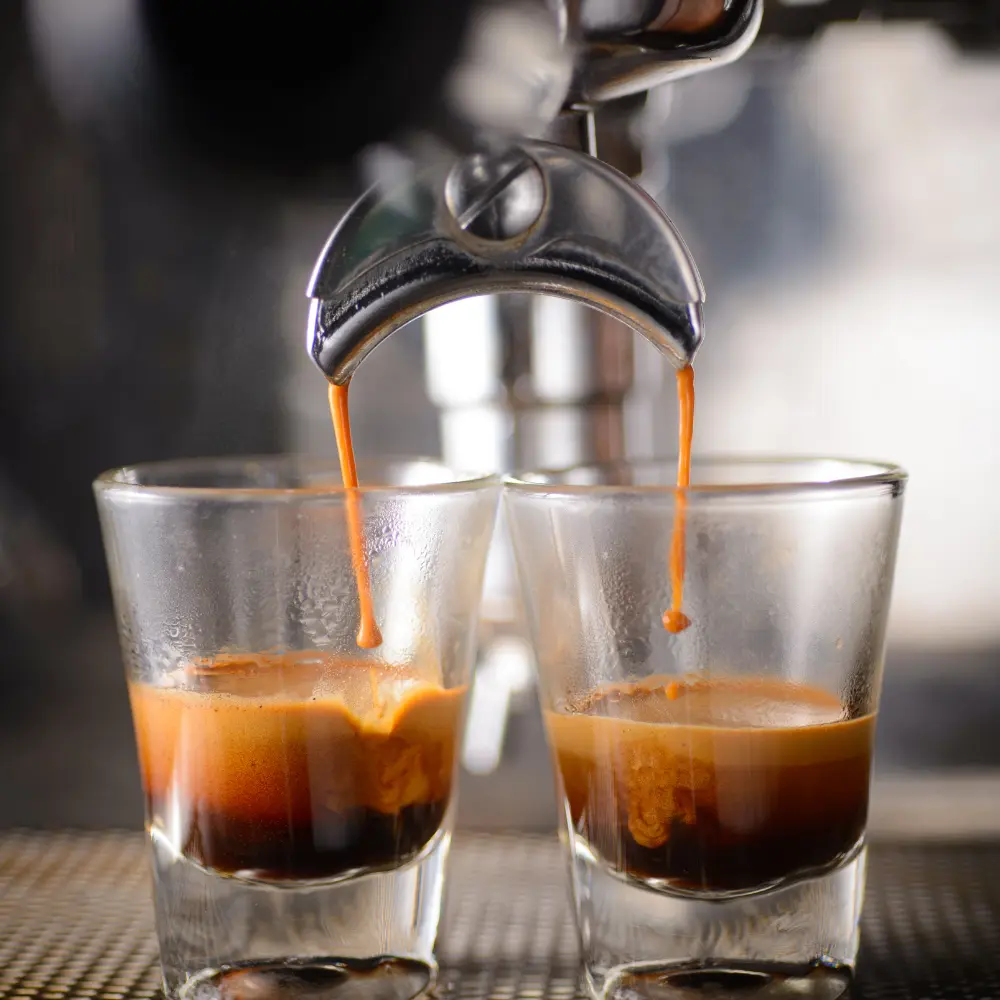
Generally, a good starting point for extraction time is between 20 to 30 seconds. If your espresso tastes sour, it may be because the extraction time is too short, meaning not enough flavor has been pulled from the coffee grounds. In this case, consider increasing the extraction time.
To adjust your extraction time:
- Begin by timing your current extraction. If it’s less than 20 seconds, try increasing the time.
- Brew another shot and note any differences in taste.
- Continue to adjust until your espresso hits the perfect balance between sweetness and bitterness, ensuring no sourness is present.
Stepping up the Pressure: The Impact of Brew Ratio on Sourness
In coffee parlance, the brew ratio refers to the coffee-to-water ratio used in brewing. For espresso, this typically involves weighing the dry coffee grounds and the resulting liquid espresso to establish a ratio. A common brew ratio for espresso is 1:2 – for every gram of coffee, two grams of water are used.
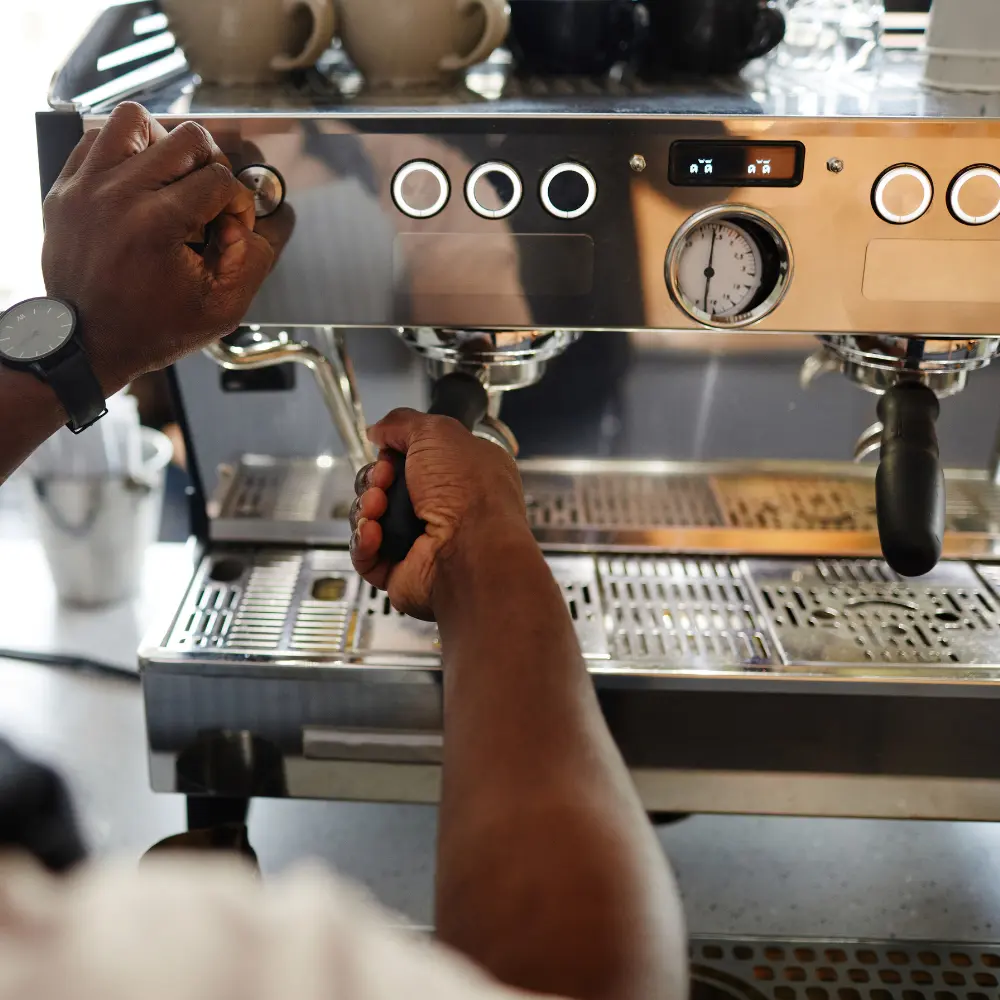
If your espresso is sour, it could mean you have too much water for the amount of coffee you’re using, leading to under-extraction. Altering the coffee-to-water ratio can be a powerful way to adjust the flavor of your espresso.
To tweak your brew ratio:
- Weigh your coffee before and after brewing to establish your current brew ratio.
- If your espresso is sour, try reducing the amount of water (leading to a lower ratio like 1:1.5) to increase extraction.
- Make sure to adjust only one variable at a time to understand the impact of each change on the taste.
Mastering the adjustments to grind size, extraction time, and brew ratio can seem like an art, but once you start to understand the relationship between these factors and how
Exploring Brewing Techniques for Balanced Flavors
Even with the perfect grind size, extraction time, and brew ratio, the brewing techniques you employ can make or break your espresso experience. From mastering the perfect pour to achieving the ideal milk texture, these seemingly minute details can significantly impact the taste and texture of your espresso. Let’s delve into these techniques and how they can help you attain balanced flavors.
Perfecting the Pour: Mastering the Espresso Shot

When it comes to espresso, the pour isn’t just about filling a cup with coffee; it’s a carefully controlled process that can greatly affect the taste of your brew. The goal is to achieve a steady stream of espresso with a rich, golden crema – the layer of foam on top of the espresso shot that’s a sign of a well-extracted coffee.
Pulling the perfect shot involves managing the extraction process precisely. As a general rule, a standard shot of espresso should take between 20 to 30 seconds from the moment you start the machine. If the pour is too fast, you might end up with under-extracted, sour coffee. If it’s too slow, you risk over-extraction, leading to bitterness.
To master the espresso shot:
- Start the shot and observe the pour. It should start slow and dark before turning into a steady stream of golden coffee.
- If the stream is too fast or too thin, adjust the grind to be slightly finer. If it’s too slow or too thick, go a bit coarser.
- Keep experimenting until you achieve a balanced pour that results in a rich, full-flavored espresso.
Steaming Milk: Achieving the Ideal Texture and Taste

If you enjoy milk-based espresso drinks like lattes or cappuccinos, the way you steam your milk can affect the overall flavor balance. The perfect steamed milk should have a velvety texture and a slightly sweet taste that complements the bold flavors of the espresso, not overshadow it.
Getting the milk right involves heating it to the correct temperature – typically around 150 to 155 degrees Fahrenheit – while introducing the right amount of air to create a creamy microfoam.
To steam milk perfectly:
- Start with cold milk and a clean steam wand.
- Submerge the steam wand just below the surface of the milk to introduce air and create foam.
- As the milk heats up, submerge the wand deeper to circulate the milk and break up any large bubbles.
- Pay attention to the temperature. Overheating the milk can cause it to scorch and introduce a burnt taste that can ruin the flavor balance.
Espresso Brewing Temperatures

Brewing temperature is a crucial factor in coffee extraction. The water temperature during brewing affects how the flavors and compounds in coffee are extracted and ultimately influences the taste of your espresso. As discussed earlier, the ideal brewing temperature for espresso is generally between 195 and 205 degrees Fahrenheit. Too low, and your espresso may taste sour due to under-extraction. Too high, and you risk over-extraction, resulting in a bitter brew.
To manage your brewing temperature:
- If your espresso machine allows, set the brewing temperature within the ideal range.
- If your espresso tastes sour, try increasing the temperature slightly. Conversely, if it’s bitter, decrease the temperature a bit.
- Keep experimenting with temperature settings while keeping other variables constant to isolate its impact on the taste.
Mastering these brewing techniques requires practice and patience. But with time and dedication, you’ll start to see a remarkable difference in the taste, texture, and overall quality of your espresso. A world of rich, balanced, and full-bodied espresso awaits!
Importance of Water Quality in Brewing
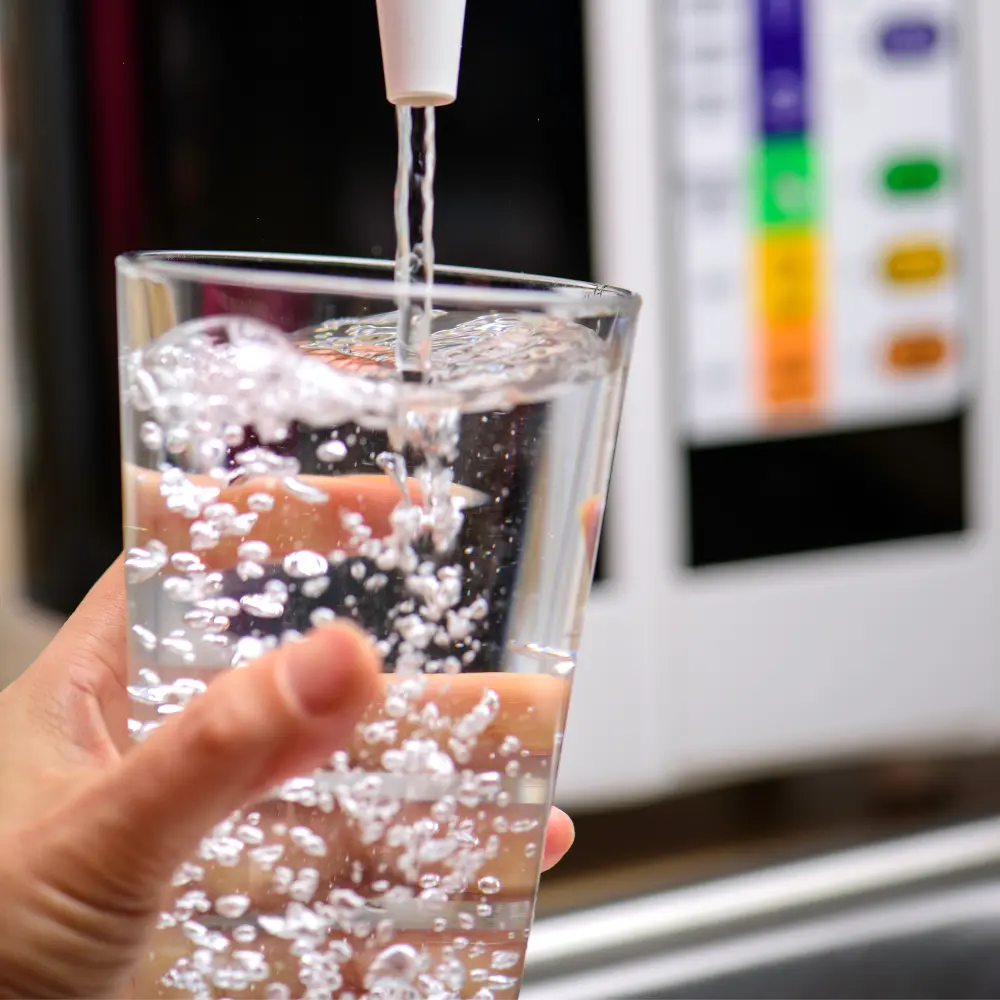
Water might seem like a simple ingredient in brewing espresso, but its quality and composition can have a significant impact on the taste. After all, water makes up 98% of a cup of coffee. It’s not just about purity—mineral content, hardness, and pH all come into play, affecting how water interacts with coffee grounds during extraction.
Impurities or chemicals in tap water, such as chlorine, can impart undesirable flavors to your coffee. Hard water, which is high in mineral content, can lead to under-extraction and thus a sour flavor. On the other hand, water that’s too soft may result in over-extraction and a bitter brew.
To optimize water quality for brewing:
- Consider using filtered or bottled water if your tap water is heavily chlorinated or has a strong taste.
- If your water is hard, consider using a water-softening solution or demineralized water.
- Aim for balanced mineral content in your water, as certain minerals can enhance the coffee’s flavors.
Remember, even the best coffee beans won’t be able to deliver their full flavor potential if brewed with poor-quality water.
Leveraging Brewing Methods: Aeropress, French Press, and Moka Pot
If sour espresso continues to be a problem, it could be worth exploring alternative brewing methods that offer different extraction profiles and could potentially eliminate the sourness issue.
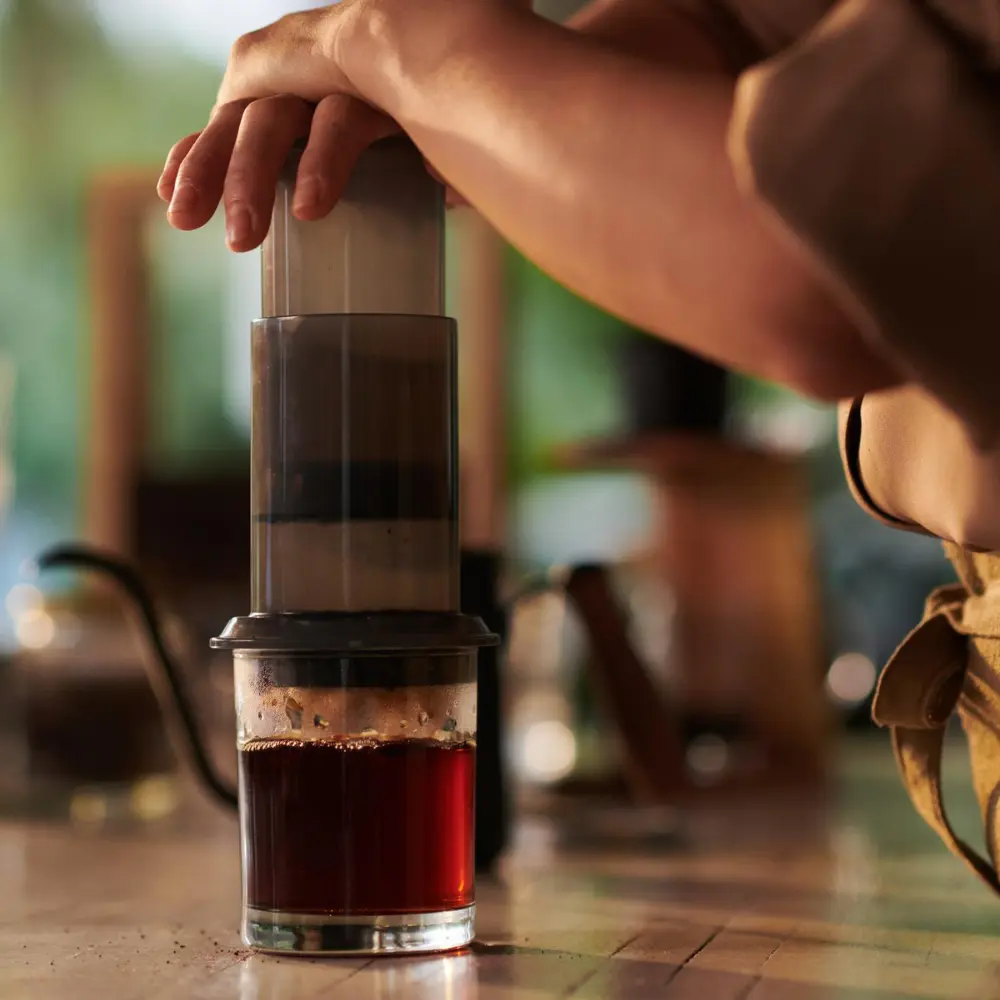
The Aeropress is a versatile and portable brewing device that uses pressure to extract coffee. It allows for a great deal of control over the brewing parameters and can produce a rich and smooth cup of coffee that’s lower in acidity.
To brew with Aeropress:
- Grind your coffee to a medium-fine consistency.
- Place the coffee in the Aeropress chamber, add hot water, and stir.
- After allowing the coffee to steep for a set time, press the plunger down to extract the coffee.
The French Press coffee maker is a popular brewing method that uses immersion brewing to produce a full-bodied and flavorful coffee. Since the coffee grounds are in contact with the water for a longer period, this method can lead to more balanced extraction and reduce sourness.
To brew with French Press:
- Add coarsely ground coffee to the French Press.
- Bloom your coffee grounds for 30 seconds
- Continue to pour hot water into the French Press and stir.
- Let the coffee steep for 4-5 minutes before pressing the plunger down to separate the grounds.
The Moka Pot is an Italian stovetop brewer that brews coffee by passing boiling water pressurized by steam through coffee grounds. It produces a strong and bold coffee that’s closer to espresso in taste.
To brew with Moka Pot:
- Fill the lower chamber with water and the funnel with finely ground coffee.
- Assemble the Moka Pot and place it on the stove.
- Remove the Moka Pot from the heat once it’s done brewing.
By experimenting with these brewing methods, you can find a method that suits your taste and reduces or eliminates the sourness of your coffee. Remember, the key to great coffee lies in exploring and understanding the variables at play in brewing, and finding what works best for your palate.
Quality Control: Evaluating and Adjusting Espresso Parameters

The art of brewing perfect espresso isn’t just about understanding the individual parameters; it’s also about learning how to evaluate the final product and make necessary adjustments. Identifying sourness, diagnosing under-extraction, and measuring extraction time are critical components of this ongoing quality control process. Let’s delve deeper into these aspects.
Identifying Sourness: Tasting and Describing Flavor Profiles
While it’s easy to say that your espresso tastes “off”, identifying specific flavor attributes like sourness requires a bit more expertise. Sourness is typically experienced as a sharp, tangy sensation on the sides of the tongue, often accompanied by a lingering, unpleasant aftertaste.
Understanding flavor profiles and being able to articulate what you taste is the first step toward fixing your sour espresso. The Specialty Coffee Association’s Coffee Taster’s Flavor Wheel can be a useful tool in developing your tasting vocabulary and identifying specific flavor notes in your brew.
To improve your tasting skills:
- Take time to savor your espresso, noting the initial flavors, the body or mouthfeel, and the aftertaste.
- Try to identify specific flavor attributes. Is it sweet, bitter, sour, or salty? Is the sourness citrus-like or more like underripe fruit?
- Use your taste observations to guide adjustments in your brewing process.
Diagnosing Under Extraction: The Importance of Extraction Yield
Under-extraction occurs when not enough flavor has been extracted from the coffee grounds, often resulting in a sour taste. Extraction yield is a measure of how much coffee solubles are in the final brew, which can help diagnose under-extraction.
While professional baristas may use refractometers to measure extraction yield, home brewers can often diagnose under-extraction through taste and visual cues. A sour taste, thin body, lack of sweetness, and pale crema can all indicate under-extracted espresso.
To diagnose under-extraction:
- Evaluate your espresso’s taste and appearance. Does it taste sour? Is the body thin or weak? Is the crema pale or nonexistent?
- If under-extraction is diagnosed, adjust one variable at a time (grind size, extraction time, brew ratio, or temperature) and note the effect on taste.
- Continue making adjustments until you achieve a well-extracted, balanced espresso.
Measuring Extraction Time: Refining the Brew Process

Measuring your extraction time, or the time it takes for the water to pass through the coffee, is crucial for refining your brewing process. As mentioned before, espresso extraction should take between 20-30 seconds. However, this can vary depending on the type of coffee, grind size, and brew ratio.
A sour espresso may indicate that your extraction time is too short. However, remember that increasing the extraction time alone may not always fix the problem. It’s about finding the right balance among all variables involved.
To refine your brew process:
- Use a timer to accurately measure your extraction time from the moment you start the machine.
- If your espresso tastes sour and the extraction time is below 20 seconds, consider making your grind size finer, increasing the coffee dose, or reducing the water volume.
- Continue refining the variables, always observing the effect on the espresso’s taste.
Quality control in espresso brewing is a continuous journey. Developing a discerning palate, understanding the symptoms and causes of under-extraction, and constantly refining your brewing process based on accurate measurements are all part of the challenge—and the joy—of brewing the perfect espresso.
Troubleshooting Common Issues
If you’re consistently encountering sour espresso, there are some common issues you can troubleshoot that might be affecting your brew such as the calibration of your grinder, this element plays a vital role in the final taste of your coffee.
Optimizing Grinder Calibration: Ensuring Consistent Particle Size

Your grinder’s calibration is another potential source of problems. A grinder that isn’t well-calibrated can produce an inconsistent particle size—some too coarse, some too fine—which can lead to uneven extraction and sour espresso.
To optimize grinder calibration:
- Clean your grinder regularly. Coffee residue can affect the grinder’s performance and alter the taste of your brew.
- Adjust your grinder to produce a consistent, espresso-appropriate grind size—typically fine but not powdery.
- If you’re still experiencing inconsistencies, consider investing in a higher-quality grinder. Burr grinders, for example, are renowned for their consistency and precision.
By addressing these common issues, you can greatly improve the quality and consistency of your espresso, ultimately solving the problem of a persistently sour espresso. Remember that coffee brewing is a science and an art, requiring both understanding and intuition.
Ensuring the Cleanliness of Your Coffee Gear
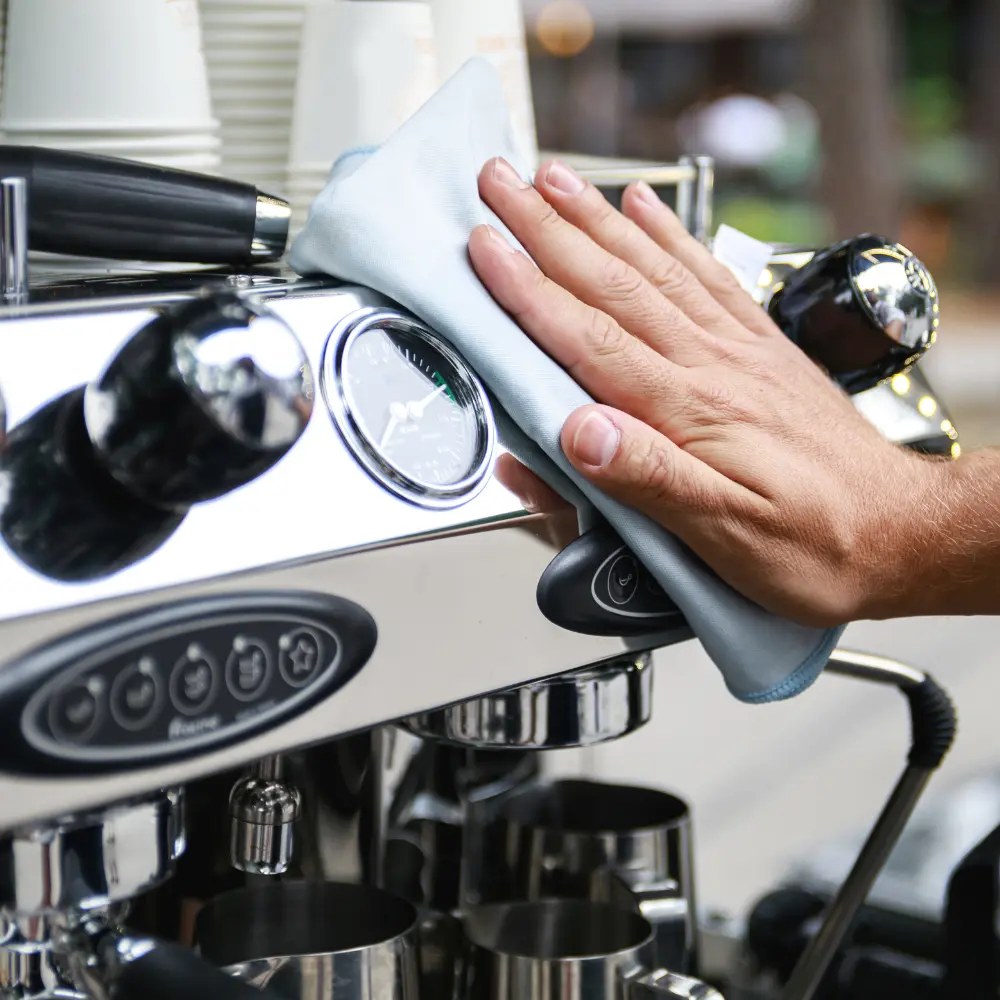
The cleanliness of your coffee equipment plays a pivotal role in brewing the perfect espresso. Over time, coffee residue and oils can accumulate on your machine, grinder, and other equipment, which can significantly affect the flavor of your espresso. This residue, if not adequately cleaned, may result in a bitter or sour taste, creating an unpleasant drinking experience.
To maintain the cleanliness of your coffee gear:
- Regularly clean your espresso machine following the manufacturer’s instructions. This often involves backflushing the machine with a cleaning agent to remove old coffee residue.
- Pay special attention to the portafilter and the group head, as these areas tend to accumulate the most residue.
- Clean your grinder periodically to remove old coffee particles. This can involve disassembling the grinder and using a brush to clean the burrs. Always ensure that your grinder is unplugged before attempting any cleaning.
- Don’t forget to clean your storage containers and tools, such as coffee scoops and tampers. Dish soap and warm water usually suffice for these items.
Remember, ensuring the cleanliness of your coffee equipment isn’t just about maintaining the quality of your espresso—it’s also about prolonging the life of your gear. Regular cleaning and maintenance are essential aspects of owning coffee equipment and can lead to a more enjoyable brewing experience overall.
Conclusion: A Journey Towards the Perfect Espresso
Achieving a perfectly balanced espresso is truly a journey that combines science, technique, and a keen sense of taste. It requires an understanding of the intricate dance between numerous variables—from the coffee beans’ age and storage to the water’s quality and the grinder’s calibration. If you’ve ever asked, “Why is my espresso sour?” hopefully this guide has illuminated the potential causes and given you the tools to start troubleshooting the issue.
Above all, remember that brewing espresso is about more than just eliminating sourness—it’s about bringing out the complex flavors and aromas that make coffee such an enjoyable beverage. A sour espresso can be an invitation to delve deeper into the art and science of coffee brewing and to develop your skills and taste buds along the way.
As we’ve seen, fixing sour espresso is not a one-size-fits-all solution. It’s about experimenting with different variables, taking note of their effects, and continually refining your process. It’s about learning to diagnose under-extraction, perfecting your brew ratio, mastering the pour, and much more.
Keep in mind that every palate is unique. What tastes perfect to one person might not suit another. That’s why it’s essential to trust your taste buds and strive for a brew that you find enjoyable and satisfying. After all, the ultimate judge of a great espresso is you.
So the next time you find yourself facing a cup of sour espresso, remember: it’s not just a problem, but an opportunity to deepen your coffee knowledge, refine your brewing skills, and discover your perfect cup.
FAQ
Why does my espresso taste sour?
Your espresso may taste sour due to under-extraction, which can result from factors like a too-coarse grind size, short brew time, or incorrect water temperature.
How does the size of coffee grinds affect the taste of espresso?
The size of coffee grinds affects the taste of espresso because it influences the extraction rate; a finer grind can lead to over-extraction (bitter taste) while a coarser grind can cause under-extraction (sour taste).
How can I improve the quality of water for brewing coffee?
To improve the quality of water for brewing coffee, consider using filtered or bottled water with balanced mineral content, avoiding water that's too hard or too soft.
What are the top expert recommendations for brewing the perfect espresso?
Top expert recommendations for brewing the perfect espresso include using fresh beans, correctly calibrating your grinder, adjusting your brew ratio and temperature for optimal extraction, and consistently tasting and adjusting your brew based on the results.





